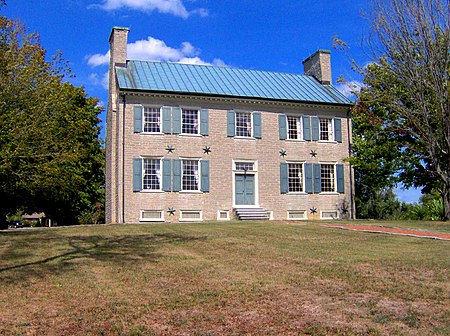Cragfont
Biographical museums in TennesseeHistoric American Buildings Survey in TennesseeHistoric house museums in TennesseeHouses in Sumner County, TennesseeHouses on the National Register of Historic Places in Tennessee ... and 7 more
Middle Tennessee Registered Historic Place stubsMuseums in Sumner County, TennesseeNational Register of Historic Places in Sumner County, TennesseeProtected areas of Sumner County, TennesseeSouthern United States museum stubsTennessee State Historic SitesTennessee building and structure stubs

Cragfont (or Cragfont State Historic Site) is a state historic site and historic house located in Castalian Springs, Sumner County, Tennessee. It was the home of Revolutionary War protagonist and Middle Tennessee pioneer General James Winchester.
Excerpt from the Wikipedia article Cragfont (License: CC BY-SA 3.0, Authors, Images).Cragfont
Cragfont Road,
Geographical coordinates (GPS) Address Nearby Places Show on map
Geographical coordinates (GPS)
| Latitude | Longitude |
|---|---|
| N 36.4046 ° | E -86.3422 ° |
Address
Cragfont Road 298
37031
Tennessee, United States
Open on Google Maps









